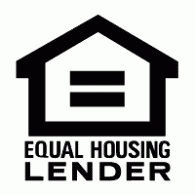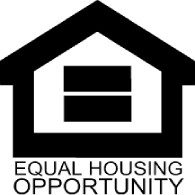Over the years, lenders have marketed a specific type of loan generically known as a “No-cost loan.”
There is no free lunch!
What do I mean by that? First, there are many costs associated with originating the loan.
It includes:
- underwriting
- credit reporting
- appraisal
- inspection
- escrow
- title insurance
- endorsements
- origination
- taxes
- homeowners association
- courier
- notary
- insurance
- and other fees required to originate and fund a mortgage loan.
The loan estimate and closing disclosure break down these fees so the borrower can see the actual cost.
Origination Fee
One of the most significant fees associated with the origination process is the origination fee. It is a fancy way of saying the broker’s commission. For example, suppose the borrower decides to “Buy down” the rate. In that case, they pay a discount fee. As the borrower, you get to choose the interest rate you want to pay for your loan. But the price you pay for this rate at par has zero discount or zero premium points. Therefore you must pay an origination fee to the broker. Each broker has their origination agreement that they charge on loans. Suppose the borrower does not want to pay this origination fee, which is usually 1% of the loan amount; In that case, they can bump the interest rate to a higher rate, and the lender will pay a yield spread, which is a percentage of the loan amount they can use to pay for some of the costs associated with the loan.

The borrower can’t use the yield spread to pay the broker’s origination fee, but it can help pay for other loan costs, such as the title insurance or appraisal fee.
There are two types of compensation on loans:
lender-paid compensation and borrower-paid compensation.
In a lender-paid compensation scenario to the broker, the interest rate includes the lender-paid compensation agreed upon in advance with the lender. This rate/APR is usually higher than the rate/APR for “borrower-paid compensation,” which the borrower will pay out of his funds. Usually, the yield spread will be 1% of the loan amount for every quarter-point increase in interest rate. For example, say the broker quotes a rate of 6% for a 30-year fixed loan for $100,000. Generally, if the rate is bumped up by 25 basis points or to 6.25%, the lender will pay you 1% of the loan amount. In the amount of $1000 for you to use for your closing costs. In a lender-paid compensation scenario, the additional yield is characterized as lender-paid compensation “outside of closing.” Meaning that it will not come out of your funds at closing.
It Makes Sense
However, in the long run, you will be paying more interest to compensate the lender. It is for the upfront “lender-paid compensation to the broker. Sometimes, it makes sense to go for lender-paid compensation. This is especially if you won’t be in the house for an extended period.
First, however, you must calculate the benefit of the higher interest rate and how that will impact your cash flow. Usually, it is in your best interest to negotiate the broker’s compensation and pay the broker from your funds. The “Loan Toolkit,” comes in handy, as you can compare multiple lenders’ offers and see which works best for you. Therefore, the actual cost of the “No-Cost” mortgage loan is in the details. By increasing your interest rate, you are paying a higher interest rate/APR and, therefore, more interest over the life of the loan than you would otherwise if you chose to pay all the loan’s closing costs yourself. Sometimes it makes sense to go for the higher rate, especially if you’re tight on cash and need help closing the loan with funds from other than your own.
What is a “No-Cost” mortgage loan?
To summarize, a “No-Cost” mortgage loan is a type of loan marketed by lenders as having no closing costs. However, this is not entirely accurate, as there are still costs associated with originating the loan, such as underwriting, credit reporting, appraisal, inspection, escrow, title insurance, endorsements, origination, taxes, homeowners association, courier, notary, insurance, and other fees.
One of the most significant fees associated with the origination process is the origination fee, which is the broker’s commission. If the borrower decides not to pay this fee, they can opt for a higher interest rate, and the lender will pay a yield spread, which is a percentage of the loan amount they can use to pay for some of the costs associated with the loan. However, in the long run, the borrower will pay more interest to compensate the lender for the upfront lender-paid compensation to the broker.
Therefore, the actual cost of a “No-Cost” mortgage loan is in the details. It is essential to calculate the benefit of the higher interest rate and how that will impact your cash flow in the long run. It may make sense to negotiate the broker’s compensation and pay the broker from your funds. The Loan Toolkit at www.blakemortgage.com/loan-toolkit can be helpful in comparing multiple lenders’ offers and determining which works best for you.
Important Note
It’s important to note that sometimes it may make sense to go for a higher interest rate, especially if you’re tight on cash and need help closing the loan with funds from sources other than your own. However, it’s crucial to weigh the benefits and drawbacks of each option and determine which is the most cost-effective in the long run.
When considering a “No-Cost” mortgage loan, it’s crucial to review the loan estimate and closing disclosure provided by the lender. These documents will break down all the fees associated with the loan, including the interest rate, and help you determine the actual cost of the loan. In conclusion, a “No-Cost” mortgage loan may sound like an attractive option, but it’s essential to understand that there are still costs associated with originating the loan. It’s crucial to weigh the benefits and drawbacks of each option and determine which is the most cost-effective in the long run. Reviewing the loan estimate and closing disclosure provided by the lender and negotiating with the broker can help you make an informed decision and ensure that you’re getting the best deal possible.





